Planting a English Laurel Hedge
Hi,
We just had a 6' fence installed and the back of the fence is by a road.
The property is on a slope and the back of the fence is next to a road. We'd like to plant the hedge next to the fence so that it will grow taller than the fence eventually creating a screen.
This is our first time doing this so I wanted to ask some advice.
How far apart should we plant them?
Since it's being planted by a fence, do I need to leave room between the fence and he hedge in order to prune the back or will the fence being there be enough to take care of the back? If I need to leave room, how far away would you suggest planting them from the fence?
I've seen some people mention digging a trench as opposed to just holes in the ground, is this a better method?
Thank you for any help you can offer,
Marc
Comments (81)
muddydogs
15 years agolast modified: 9 years agoDefinitely dig a trench. It's great exercise for the abs.
cascadians
15 years agolast modified: 9 years agoIn my yard and the next it seems it's taken a couple years for the English Laurel to "take." It was scrawny and yellow and dropping so many leaves the 1st 2 years. Now, however, it's very green and happy and growing. Will be pruning it for 1st time next spring. It's next to a 'dwarf' one that is also doing better after struggling to establish. On both side are Nellie R Stevens hollies, doing well, growing and with nice red berries in winter. And around those are lots of leylands, LOL -- and yes there's ivy nearby! I didn't plant the ivy and it doesn't seem to be spreading much.
With over 300 trees in a not-so-big yard pruning will be the order of the day. I want the laurels to grow to tree height and trunk thickness but will prune them along the way to keep width in bounds. It is right next to our compost pile and worm bin so eventually its roots will tap into awesome fertilizer.
Planted all sorts of vines and trees to try to get a natural barrier around my house for privacy and noise reduction and screening out the ugliness all around of ppl who don't care about their yards or plants at all.
I'm a newbie gardener, started Dec05, and the more I work outdoors, the more I like it. Learning a lot as I go and have benefitted tremendously from GardenWeb forums.
One thing to keep in mind -- if you prep your planting area well, turning the soil in a bare area and digging the trench and holes and composting and if necessary at first buying a bunch of 4-way blend topsoil, and putting a slightly bermed well around each plant -- these preps pay off big-time in the long run and are well worth the effort.
Be sure to water regularly and deeply the 1st 3 years so the plant can establish its root system enough to become more independent. It doesn't rain much anymore in Oregon from mid spring to fall.
Related Professionals
Braintree Landscape Contractors · Brownsville Landscape Contractors · Overland Park Landscape Contractors · Paramount Landscape Contractors · Wayland Landscape Contractors · White Bear Lake Landscape Contractors · Claremont Fence Contractors · Lexington Fence Contractors · Manassas Fence Contractors · Parkway Fence Contractors · Pasadena Fence Contractors · Saint Louis Park Fence Contractors · Santa Maria Fence Contractors · Torrance Fence Contractors · La Mirada Fence Contractorsmadhatten
15 years agolast modified: 9 years agoHi all and hi to Marc who started this thread.
Marc I want the Laurels for the same reason as you: privacy and hopefully a noise buffer. I have heard that they are good for pollution absorption too.
I have a few questions I would like you guys to answer for me?
1)How old are these 30ft Laurels some of you have?
2)How many years does it take until you regret planting them and they are 20ft tall and 10ft wide?
3)How much can I expect them to grow when they are so young (2ft high at the moment)?
I have a few of them and I am glad I read the articles above. I can see that I need to replant the ones I have planted another two feet from the fence.
Email me at yesright@Hotmail.comsipping_tea
15 years agolast modified: 9 years agoWell, tonypumpkin's post really made me laugh. We too have ourselves a massive laurel hedge. It measures roughly 10' wide and about 20' tall. And yes, some of the trunks/stumps are as much as a full foot or more in diameter. This hedge came with the house we purchased in the fall of last year. We would, at some point, like to remove it, because that's another 10' of property we could really use.
We live on a corner lot and this hedge is on the side we share with our neighbour. We expressed our desire to find a way to get the hedge out of there, and our neighbour was thrilled, as it is encroaching on their property as well.
There's a laurel hedge on the other side of the property as well, but it's spotty, not solid like the other side.
Either way, we'd like to be laurel-free all around! A fence is a viable option on the side we share with our neighbour, but a fence on the street side will only mean trouble. We have A LOT of problems with kids "tagging" the fences, and with the size of our lot (a little over a quarter acre) that big long fence would be akin to a massive gas-station-bathroom wall. No thank you!
And so, we too are trying to come up with options. And like Marc who originated this post, the street and sidewalk alongside us are higher than our property, and we're looking to make things a good deal more private. My hubby has said we should plant Emerald Green Cedars. I don't know enough about them to know if this would be a good option. So, I too am all ears for suggestions.
Thanks for all the posts. Good to have people to commiserate with.
harkshome_comcast_net
15 years agolast modified: 9 years agoI am a guy who is clueless with plants. My neighbor has a 100 foot easement for his driveway that goes down the side of our property. We have had Arborvitaes separating our properties and they have fallen and needed to be replaced twice due to snow and ice over the years. The depth of the planter is about 4 ft and I would like a solid hedge at least 6 feet tall for privacy. So here is the question: what plant will make the best hedge here in the Portland area?
boizeau
15 years agolast modified: 9 years agoDon't do it.
You will grow to hate that thing.
They will easily go over 25 feet tall, and the cost of having them trimmed will amaze you. A crew of 4 guys and with ladders will spend hours trimming it every year, and they will charge accordingly, 'most landscape gardeners hate them'. It is not fun work.
There are any number of superior privacy screen plants. I would go with Pyrimidalis long before I'd plant English Laurel.
Also the Laurels tend to create a lot of seedlings and will try to spread.
As an individual tree, it is not half bad in the yard as a specimen evergreen, but too rampant for a hedge.elisecreature
15 years agolast modified: 9 years agoI am very well aware of the drawbacks of prunus laurocerasus, the monsterous growth habit, and it's invasiveness. I do not want to plant a hedge plant that is on the noxious list of the beautiful city of Portland, Oregon in which I live. SO I NEED HELP. I have not found a suitable alternative for my needs: dense hegde of 8-12 feet for blocking sound and sight of adjacent road; all light conditions: sun, partial shade and full shade; and evergreen. Please Help.
wildwood_13
15 years agolast modified: 9 years agoMy neighbor had a tall English Laurel hedge that gave us: privacy between our backyards,shelter to wild birds year- round, and shielded my yard from a high nightlight that makes it hard to see the stars at night. I pruned it annually, but house sold -- new owner who spent 2008 summer evenings in his backyard drinking beer and swearing at his family chainsawed it down to ugly nubbins last fall. In shock, I retrieved a few branches that fell on my side of the fence and overwintered them -- one large branch I'd laid over the tarp on my woodpile even survived this winter's snow and subfreezing temps that way! Those starts are being replanted on my side of the fence this weekend so in a few years, I'll no longer have to deal with his son outside "playing guns" and aiming at me for fun with his toy guns. Yay for English Laurel!
kayef
14 years agolast modified: 9 years agoGee, I am glad I read all this! A friend of mine told me the builder planted these hedges way too close to the house and together. (I think now that I know they are such growers, AND since I have a neighbor who wants to plant arbor vitae for privacy..(ECHHH) I could in theory, move these five future monsters down there. Since I am a backyard habitat, I am sure the birds would like them, and I would enjoy privacy...
SO - when is the best time to dig up and relocate these guys. Also how much digging is it going to take to get the root ball?
If anyone would like to email me at my email, I'd appreciate it. Of course I will check these forums also.
Thanks in advance!Embothrium
14 years agolast modified: 9 years agoEveryone promoting or coveting this plant should take a walk in some of the local urban parks where it has formed thickets of massive alien shrubbery. The north side of Hamlin Park in Shoreline is a parking spot for drug deals etc. because laurel, holly, ivy etc. have grown up to form an unnatural screen where otherwise there is a grove of native conifers with clear trunks.
Everyone is welcome to come and cut the neighbor's laurel hedge back away from the north side of our house.
Again.
jewell_pnw
14 years agolast modified: 9 years agoAny unmaintained plants provide problems. The sequoia a neighbor planted on the south side of my orchard, and the line of fir trees planted on the south property line of our city lot have totally block sun that I would have rather had. Laurel and ivy on the other hand are quite manageable if you are willing to take the time, just like you would any garden plants.
We had a 40 foot strip of laurel hedge for 25 years. It was planted for quick separation between the duplex next to us that had a series of bad renters. It was a successful planting for a number of years (approximately 20 years) with the plants one foot to eighteen inches apart. We did hedge it yearly fairly hard, keeping it narrow (2 feet deep) and tall (approximately 10-12 feet). We have a wire fence that is approximately five feet tall that also provided a barrier. If you want quick results and are willing to prune at least yearly and after it gets going twice yearly no problem. We had an old lawnmower that we chopped the clippings with and used as mulch on the other beds. We never had a problem with seeds/flowers until we started taking it out (a two year job, because we got rid of the debris as we went and weren't as dedicated as we should have been) and stopped clipping it. Laurel can fill a need if you want very quick results.
If you aren't in quite such a hurry ivy takes approximately 3 years to reach six feet with support and training (first year sleeps, second year creeps and third year leaps). We must have 800 feet of ivy hedges planted around and bisecting our city lot. They are 27 years old. These I would not trade for any other type of fencing for providing a barrier to neighbors and keeping our dogs in while looking great. All are on old wire fencing that is supported with metal posts. Some is on chainlink fencing. The front fence is only 3 feet tall and I clip it hard once a year. The back yard is six feet plus in height. It is 6-8 inches in depth. I love it as the easiest hedge to take care of. I don't clip the back fencing but every other year or so. It doesn't get out of control, and we mow along the edges. For neighbors that don't take care of their yards or areas that are not taking care of, ivy keeps down the blackberries (which were big rat infestation areas in our neighborhood)and most other weeds. I haven't had a problem with the ivy going to seed either unless I don't trim it for more than three years (flowers on old wood). Ivy clippings make the best mulch for garden beds. We run over the clippings with our old lawnmower and use them in the vegetable garden and flower beds. Green gold as far as I am concerned.
Whatever you plant make sure you like it, and are willing to maintain. When we had our lot enlarge (purchase of additional yard from neighbor) taking out the ivy fencing was just as troublesome as the laurel.
Oh yeh, I've also planted golden bamboo (clumping form). Believe it or not this is also a great hedge if you are willing to harvest the canes yearly for garden stakes. It wasn't until this year (I didn't harvest canes for five years) that I have had to do any hedging and severe cutting back. It takes much longer to establish and have a nice stand, but it does get to be 20-25 feet tall. The clumps have gotten wider that what I would normally keep a hedge (approximately 2 1/2 to 3 feet), but having the stakes for decorative supports around the yard and garden would cost me a small fortune to purchase. And yes I use the old lawnmower to chop the leaves from the stalks for composting.
Embothrium
14 years agolast modified: 9 years ago>Laurel and ivy on the other hand are quite manageable if you are willing to take the time, just like you would any garden plantsThe problem is that these do not stay in the garden. Birds spread them onto undeveloped property and natural areas, as well as the gardens of neighbors.
If everyone kept all their plantings of these closely sheared or otherwise prevented flowering, then they would not seed out.
Everyone does not do that by any means.
>I've also planted golden bamboo (clumping form)There is no clumping form of golden bamboo. Like other running bamboos grown in our dry summer climate it may remain in a tuft for years due to lack of optimal soil conditions.
I've had a shoot of the 'Koi' cultivar pop up about 15'-20' away from the parent plant, with no other stems between.
jewell_pnw
14 years agolast modified: 9 years agoGuess I am doing something wrong then, and for 26+ years. Plants are where they are supposed to be and none have flowered, run or set fruit. Clipping and cutting have worked for me. Now those pesky butterfly bushes are another story, I tore all of that out years ago and it still pops up.
George Three LLC
14 years agolast modified: 9 years agoi just took out a huge english laurel hedge. it was a ton of work, and i had a bit of hired help with it.
two owners ago they really let the hedge go, volunteers all over the neighbor's property turning into small trees. one very old volunteer about 30 feet tall, 30 feet wide. its actually a very attractive tree when you let it go.
but still, the point is that hedges don't just magically disappear when you sell/move. YOU may keep it in check, but 3 owners from now? how do you know that person is gonna prune it correctly to keep it from fruiting?
kkcowmanua
14 years agolast modified: 9 years agoi have a laurel hedge which is 14 feet tall, and I'd like to trim it down to 10. What type of ladder or scaffolding would anyone suggest using to get at the top? I have 350 feet of hedge to trim, with a gas powered double sided hedge trimmer. Would an orchard ladder (3 legs) be a good choice? Any suggestions would be helpful
Embothrium
14 years agolast modified: 9 years agoIf you assemble a platform like painters use you won't be going up and down a ladder hundreds of times. With an orchard ladder only you can't cover very much horizontal distance with each placement of the ladder.
cherokeedawn
13 years agolast modified: 9 years agoWoW, hot or cold and none between! This has been a very interesting thread.
I am worried now however because I just planted 8 'Otto Luyken' and the tag says english laurel. I am confused by all of the different kinds listed online. Is this small shrub the same thing as the cherry otto luyken?
It says on it 24-36 inches tall and six foot spread. I have seen them all over and they do not seem to "take over" anything. Should I be worried? Should I dig them all up and throw them into an abyss?
Embothrium
13 years agolast modified: 9 years ago'Otto Luyken' is a slow-growing, dark green named selection of English laurel.
English laurel: Dairy cow
'Otto Luyken': Holstein
Old plants will be well above head height, as can be seen at the Seattle arboretum. Although it fruits I seldom see seedlings that resemble it. It may, however give off seedlings resembling the typical species - I don't know.
Some specimens of this cultivar have terrible Prunus shot hole fungus problems in this area, looking almost as though a shotgun was fired through them.
mangas
13 years agolast modified: 9 years agoI've been considering English Laurel for a hedge but am open to alternatives. Even after reading this thread, I still think Laurel is a good fit for my needs, but let me know what you all suggest.
I have a (mostly open) half acre that borders a highway with lots of noisy traffic. Currently only grass and weeds grow on that edge of the property, and I don't plan to use the area for anything (house at other end of property is occupied). On the other side of highway, there are a bunch of tall, ugly industrial buildings. Ideally, I want a hedge (wall) with the following characteristics:
1.) Thick and tall (for privacy, and to block view of ugly buildings). 10' wide and 30' tall would be wonderful! 20' wide and 40' tall would be fine too. The wider the hedge, the less grass/weeds I have to mow in summer.
2.) Evergreen
3.) Fast-growing
4.) Dense growth (so is capable of dampening some of the road noise).
5.) Relatively inexpensive.Although it would be a great noise barrier, building a wall there is prohibitively expensive for me right now (and wouldn't be tall enough to block view of ugly buildings anyway).
There is some arborvitae planted on another edge of property but I hate it (so ugly). Laurel is not ugly to me.
Thanks for any ideas.
I am in Portland, OR.
Embothrium
13 years agolast modified: 9 years agoPlantings have little impact on noise. Pacific wax myrtle might work for you.
rlmyers_wbcable_net
12 years agolast modified: 9 years agoOk...I admit it... i am totally confused... I have a place on the Oregon Coast...Seal Rock area to be procise...I boarder Hwy 101...road noise is an issue...My thought was to plant English Laurel to Dampen the road noise and to create a Living fence... the hedge can grow to a heighth of 20 feet before reaching powerline heighth at which point power company will trim as they do all trees along 101.. width can grow as wide as 12 feet... Will this tree at a width of 12 feet dampen the road noise of the traffic..How much wider does this tree grow...what is the maximum heighth and width of this tree if left totally un trimmed...what are my other options to accomplish my desired results...
what to do... what to do...
Embothrium
12 years agolast modified: 9 years agoPlant something else, not so large-growing. And put up a wall or fence for the noise.
Or move. You have to put up something like a concrete wall or a high earthen mound to muffle a highway. Anything less than that and it will still be really apparent you are right next to a busy road.
There's a reason the highway department erects tall concrete walls to make conditions more pleasant in neighborhoods along freeways.
tmcdonald
12 years agolast modified: 9 years agoHi Marc,
We just planted some new shrubs ourselves and put them about every 2-3' to get nice thick coverage.
Also, the fence should push the back of the plants up, but I might leave room as having the plants rub against the fence will ware the fence a bit. I think a 2 feet would allow you enough room to easily maneuver and handle the hedge. You can trim it to any shape you want, and if you keep it trim you won't have trouble getting back there.
Haven't heard about the trench specifically. We did individual holes and have had no problems. I would also watch for moles and other rodents that might go after the roots when they are getting established.The link below is a good guide as well.
Good luck!
Embothrium
12 years agolast modified: 9 years agoSince the typical species grows 20'-30' across, if that is what you planted you will certainly get good coverage with a 2'-3' spacing.
larry_gene
12 years agolast modified: 9 years agoThis forum thread has become like an unpruned laurel, and the original poster's laurels (if planted in 2006) should be in need of heavy pruning by now.
Bradybb WA-Zone8
12 years agolast modified: 9 years agoThis is part of the nice monster that lives by me
{{gwi:1078856}}
Here is the top of one of the monster's feet that I want to remove to put in a greenhouse
{{gwi:1078857}}
The battle begins!
{{gwi:1078858}}
The battle rages!
{{gwi:1078859}}
Monster foot is not giving up without a fight!
{{gwi:1078860}}
I can taste victory!
{{gwi:1078861}}
It's over,don't feel so tough now eh Monster foot?
{{gwi:1078862}}1 two ton come-a-long=$25
10 feet of 1950lb test chain=$32
1 axe=$35
Tearing out a Monster foot=Priceless!So gteye,if a monster foot is needed to add to your collection or anybody else for that matter, this one will be here til it's claimed or dies,which will probably be through the next millennium.
Excuse me now,I sweaty and need to take a shower. BradyLolagirl
10 years agolast modified: 9 years agoHi,
This is from a complete newbie for planting anything.
We're about to plant Laurels, about 3ft plus, delivered in plastic tubs.
They have a wrapping net? around the root ball.
Do we remove carefully, and tease out the flattened roots, or...?
Before you think, surely everone knows that, well, here's one who is not sure:-(
My husband is 78, in poor health, but still strong.
Please advise.
Thank you,Lolagiel
Embothrium
10 years agolast modified: 9 years agoTake off the wrap, place in hole, fill hole with same soil that came out of hole, mulch and water well. No mulch against stems. Wood chips best, otherwise bark. If leaves not a good, deep green, apply evergreen fertilizer per label directions. If fertilizing be sure to keep watered well. And of course you don't want them to get dried out anyway.
If you see roots on the outside of the balls going around in circles try and pull those out into better positions, but I would not try and bare-root this item at this time of the year, under your personal circumstances. Stiff roots that want to bend back can be held out in the desired away-from-center orientation with sticks or rocks - just don't bury a whole bunch of rocks right around the plant.
uintahsp
10 years agolast modified: 9 years agoThis thread is a hoot. Sort of religious in nature-- fanatics, apologists, persuaders, lyricists. I was given a 20-gallon pot of 5 or 6 baby laurels. Have 3 acres, 2 of which border forest. Need a quick, tall barrier along the road for privacy and protection vs teenage bb-gun hobbyists-- exactly where the previous owner ripped out a mature laurel hedge because she didn't like laurel. I'm from So. Idaho where we planted 200 trees, of which 20 survived. I love anything that grows. Will plant laurel along the street and trim it 2x a year. That's less than half the frequency & effort needed to trim llama nails. Next owner can burn it down if s/he wishes...
Embothrium
10 years agolast modified: 9 years agoPlanting next to a wooded area not good as liable to spread into it.
uintahsp
10 years agolast modified: 9 years agoI venture into that forest frequently. Yes, a little laurel spread from our old hedge to sunny areas along the road. But the bigger problems are holly, blackberry, alder, and foxglove. Fir have a hard time making it. Any suggestions?
dottyinduncan
10 years agolast modified: 9 years agoWhy don't you go with Leyland Cypress? At least it doesn't set fruit, get suckers and be badly behaved other than just growing. I know it is ubiquitous but for good reason.
uintahsp
10 years agolast modified: 9 years agoNo one will give me Leyland cypress. Everyone's willing to donate laurel. :) But thank you for this suggestion; I'll look for nursery sales. (Actually, we did plant several Austrian pines. Not the best choice for this climate nor much privacy, also it took them 4 years to take, but they're doing pretty well now.) I'm thinking a tall wire fence with a vine.
urzababa
8 years agoWell this has been an education. I live in the Bay Area near San Francisco, CA- not the northwest- and was considering a hedge of English Laurel to replace an ivy hedge between myself and our side neighbors. I am thoughtfully reconsidering the choice for all the above mentioned negatives. Back to the drawing board I guess. However, an evil little part of me still wants to consider the laurel hedge as a mask for the ugly utility pole looming over my backyard, not sure the back neighbors will appreciate the planting since they sit below my property at the bottom of a steep embankment and such a hedge would block what little sun the receive.
Embothrium
8 years agoWhere you are there should be a ton of evergreen tree and shrub options to choose from. Maybe visiting a labeled collection such as the San Francisco Botanic Garden in Golden Gate Park (if you are more toward the ocean) or the University of California Arboretum at Davis (if you are more out that way), looking for candidates there would bring something to notice that you might like to try. Of course, not everything seen in botanical collections can be easily found at nurseries - but such displays do feature plants that are local landscape staples also.
c_chumlea
8 years agoI am considering this hedge along a long farm drive. At least 300 feet long. It can grow as tall as it likes and as wide as it likes. Can I plant this as a natural hedge without trimming it? I am in VA
Mike McGarvey
8 years agoIf it's hardy where you live you'll have to plant it at least 20 ft. from the driveway. That will give you a few years. I took out an old English Laurel hedge between two neighbors once that was 40 ft. wide and 50 years old. If you have a small lot, that's a lot of space.
Mike
Embothrium
8 years agolast modified: 8 years agoIf this species seeds out in your area then a 300' long planting will serve as a nice source of infestation for perhaps some distance around it, for as long as the planting is retained. What about using Prunus caroliniana instead, does that grow there? At least it is native to the region. Or maybe Ilex opaca, or another holly that is not an invasive alien (unlike I. aquifolium). Nowadays various attractive hybrid hollies are on the general market.
Fred Kovac
8 years agoWow, wonderful education. I went trough Leyland Cypresis planing them 10 years ago thinking they will do good privacy screen bud made bad mistake. Once they grow 20' or more they will start dying out from bottom up and you will end up with ugly dead branches up to 6 feet high or more. So I cut the dead sticks off and end up with bear trunks with privacy screen starting way above 6' high. What a nightmare. I waited ten years for them to grow and end up with bare trunks 8' a part. So now I'm planting every evergreen I can find including Hollies, English Laurel,Wax Leaf Privet etc. just to get my neighbor of my ass. I'm just looking at it from different angle. Cutting down a bush or two will take just part of my day but growing another privacy screen will take part of my life. So just to sum it up, I'm jealous of all of you with thick green evergreens along your property crying cose you have to go trim it once a year.
Peter (Zone 9b, Sunset 16, SF Peninsula)
8 years agolast modified: 8 years agoHow about an English laurel tree? I need something about 18' tall and if it gets taller that I can top to shade out a second floor window. Does the tree form have the same issues?
gardengal48 (PNW Z8/9)
8 years agoThere is no English laurel "tree" - only a shrub that has been trained and limbed up to have a tree-like form. And that takes time to achieve. And it will pose the same issues or challenges that any English laurel will regardless of form, although how pressing or critical that might be in the Bay area, I can't say.
Have you considered an arbutus? Arbutus unedo or Arbutus 'Marina' are smallish evergreen trees with both attractive bark features as well as hummingbird attracting flowers.
Embothrium
8 years agolast modified: 8 years agoOf these the 'Marina' will probably grow up the fastest, tend to have an elevated crown. And was named from a tree growing in San Francisco that was planted in 1942 or earlier, was 46' 6" high by 1994. So you know it will grow there. Otherwise Laurus nobilis has an upright, fairly rapidly developing habit - and is very tolerant of pruning.
joie
7 years agoI've looked but can't find much info about the English Laurel/Prunus Laurocerasus ROOT system. I have a tree version at the corner of a small (20ft x20ft) urban back garden in Dublin which now has a 60 inch circumference at base and grows to 18ft until I get it cut back (expensive) every 4 years. It was probably 10 years old when I bought the house 20 years ago, so now 30. I love the privacy the leaves give, hate the large number of leaf fall, berries etc. but mostly FEAR some humongous root system will eat into my neighbors new house extension about 10 feet from our boundary wall...does this kind of laurel of this size send out similar root systems that destroy? Can't find anything about it...arborist says not to worry but I do! Should I fell or watch it's trunk and probably roots get bigger and bigger? Please someone advise???
gardengal48 (PNW Z8/9)
7 years agoVery few plant species - even large trees - send out or develop root systems that will "destroy" anything, provided whatever they encounter (foundation walls or slabs, plumbing pipes, etc.) are structurally sound to begin with. If cracked, broken or otherwise compromised, then it doesn't require a large growing plant with an aggressive root system to cause damage. When roots encounter a solid immovable object - like a foundation wall - they just turn and grow in another direction.
I agree with the arborist that you shouldn't have much to worry about. Most of the continued root growth a well-established laurel will generate will be new feeder roots which are located towards the soil surface and are small in diameter and fleshy and pose no concern. All the large, woody, structural roots should already be in place.
SeniorBalloon
7 years agolast modified: 7 years agoMy beast grew untamed for 13 years. I always thought it was a good shield between the house and the dirt road. It reached 30 feet high and 15 feet wide. It's only saving grace was obscuring the view and catching some of the dust from the road. It finally started to encroach on the driveway and the wife complained daily that it was an eyesore and needed to be trimmed. My brother and I went at it with a machete, an axe and a chainsaw. It took us two days to get it to this.

Still ugly and as I looked down the years to come was going to be a pain in the butt to maintain.
We also had a clump of bamboo that was getting out of control and at my wife's urging we hired a backhoe to rip out the hedge and the bamboo. Best damn decision I've ever...my wife ever, made me decide. The root systems are not extensive even for a 30 foot laurel. It only took 45 minutes to rip out 18 of these bad boys.

It's been three years and this is what the area looks like today. It will take a few more years for the rhodies to grow up and partially block the view from the road and I really don't notice dust. Everyday I drive up to our place I'm greeted by this nice view and my wife is very happy.
Wayne Reibold
7 years agolast modified: 7 years agoI have English Laurel on my 1 acre property at places along lot line to block out neighbors. I have had some volunteers but not many. I see far more holly and ivy volunteers than I do Laurel. I like the shiny green look of the English Laurels and see no reason to prune them for my situation but I have PLENTY of space for them to spread on my acre.
I see people plant plants inappropriate for their yard all the time, high density homes with postage stamp backyards with Leyland Cypress planted right next to fence (which ofcourse will get pushed over) and them have NO backyard if they don't prune them and if they do prune them quite an ugly thing to look at in their backyard.
IMO people shouldn't plant things like English Laurel or Leyland Cypress unless they have plenty of space for them to spread. People talking about pruning these monsters 1 or 2x/year, no thank you, not an appropriate plant for the area if they need to be pruned that much!
Embothrium
7 years agolast modified: 7 years ago>I have had some volunteers but not many. I see far more holly and ivy volunteers than I do Laurel<
According to a 2006 report on Seattle's urban forests,
English laurel was the second most common invasive tree species, found
on 67% of study plots with an average of 46 stems/acre (English holly
was the most common invasive tree found in this study).Wayne Reibold
7 years agolast modified: 7 years agoI'm just reporting what I see on my 1 acre lot. Perhaps some conditions make English Laurel spread more seeds, there probably is such an explanation. The one thing that does match what I stated is I find more Holly than Laurel volunteers and since Ivy isn't a tree that wasn't included in the study. I don't have time to read that study but wonder how # Holly volunteers compare to Laurel volunteers in that study. I'll try to read it soon.

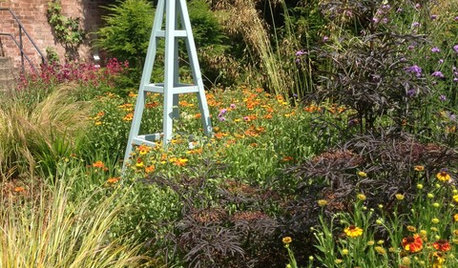
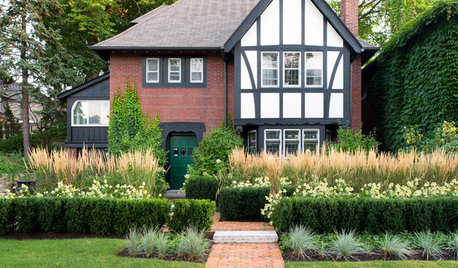
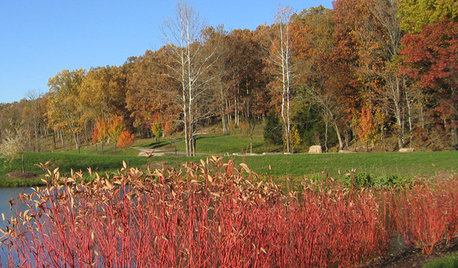
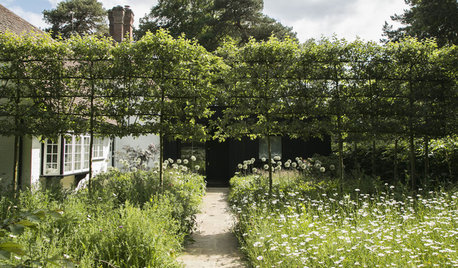
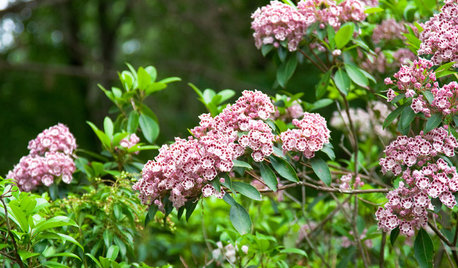









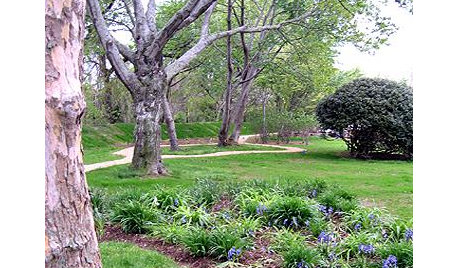




nwnatural